The Impact of Renewable Energy on Global Markets
This article explores how renewable energy influences global markets, including economic growth, job creation, investment trends, and environmental sustainability, highlighting the transformative potential of clean energy sources.
Renewable energy is not just a buzzword; it’s a powerful engine driving economic growth across the globe. By creating new industries, enhancing energy security, and reducing dependence on fossil fuels, renewable energy is reshaping the economic landscape. When we invest in clean energy, we’re not just investing in technology; we’re investing in the future. Studies have shown that for every dollar spent on renewable energy, there’s a significant return in terms of job creation and economic activity. In fact, countries that embrace renewable energy often see a boost in their GDP, as they tap into new markets and technologies.
The shift towards renewable energy sources has led to the creation of millions of jobs worldwide. This isn’t just a statistic; it’s a lifeline for many communities. As we transition to clean energy, we’re not only reducing carbon footprints but also building a workforce equipped for the future. The renewable sector is diverse, offering a range of job opportunities from manufacturing solar panels to maintaining wind turbines. This section examines the types of jobs generated and their impact on local economies.
Various sectors within renewable energy, such as solar and wind, offer diverse job opportunities. These roles require a mix of skills, from technical expertise to project management. For instance, the solar industry needs engineers to design systems, technicians to install them, and salespeople to promote them. The wind sector similarly requires a range of roles, including:
- Wind turbine technicians
- Project managers
- Environmental scientists
As the demand for clean energy grows, so does the need for a skilled workforce capable of meeting these challenges head-on.
As the renewable sector grows, so does the need for specialized training programs. Educational initiatives are crucial to prepare the workforce for emerging roles. Community colleges and vocational schools are stepping up, offering programs tailored to renewable energy technologies. This ensures that as we create jobs, we also equip people with the necessary skills to thrive in this evolving industry. Investing in education is not just about filling positions; it's about building a sustainable future where individuals can grow alongside the industry.
Job creation in renewable energy can revitalize local economies. Take, for example, a small town that once relied heavily on coal mining. As the coal industry dwindled, renewable projects like solar farms and wind energy installations emerged, breathing new life into the community. These projects not only provide jobs but also stimulate local businesses, from restaurants to hardware stores. Case studies of communities that have embraced renewable energy show a remarkable economic uplift, as they transition from outdated industries to modern, sustainable practices.
Despite the positive trends, challenges remain in job creation within the renewable sector. Barriers such as skill gaps and regional disparities in job availability can hinder progress. For instance, while urban areas may see a boom in renewable jobs, rural regions might struggle to attract the necessary investments. Addressing these challenges requires a concerted effort from governments, educational institutions, and the private sector to ensure that opportunities are accessible to all.
Investment in renewable energy has surged over the past decade, reflecting a growing recognition of its importance. This section analyzes current investment trends, key players, and the factors driving financial support for clean energy initiatives. As more investors recognize the potential for returns in the renewable sector, we can expect to see a continued influx of capital.
Different regions exhibit varying levels of investment in renewable energy. For example, countries like China and the United States lead the way in solar and wind investments, while others are just beginning to explore their potential. Understanding these global investment patterns is crucial for identifying opportunities and challenges in the renewable energy landscape.
The balance between private and public investment is crucial for renewable energy growth. Government incentives, such as tax credits and subsidies, play a significant role in attracting private sector initiatives. Together, these investments create a robust ecosystem that fosters innovation and growth in renewable energy technologies.
- What are the main benefits of renewable energy? Renewable energy reduces greenhouse gas emissions, creates jobs, and enhances energy security.
- How can I get involved in the renewable energy sector? Consider pursuing education or training in renewable energy technologies, or explore job opportunities in your area.
- What challenges does the renewable energy sector face? Challenges include skill gaps, regional disparities in job availability, and the need for substantial investment.
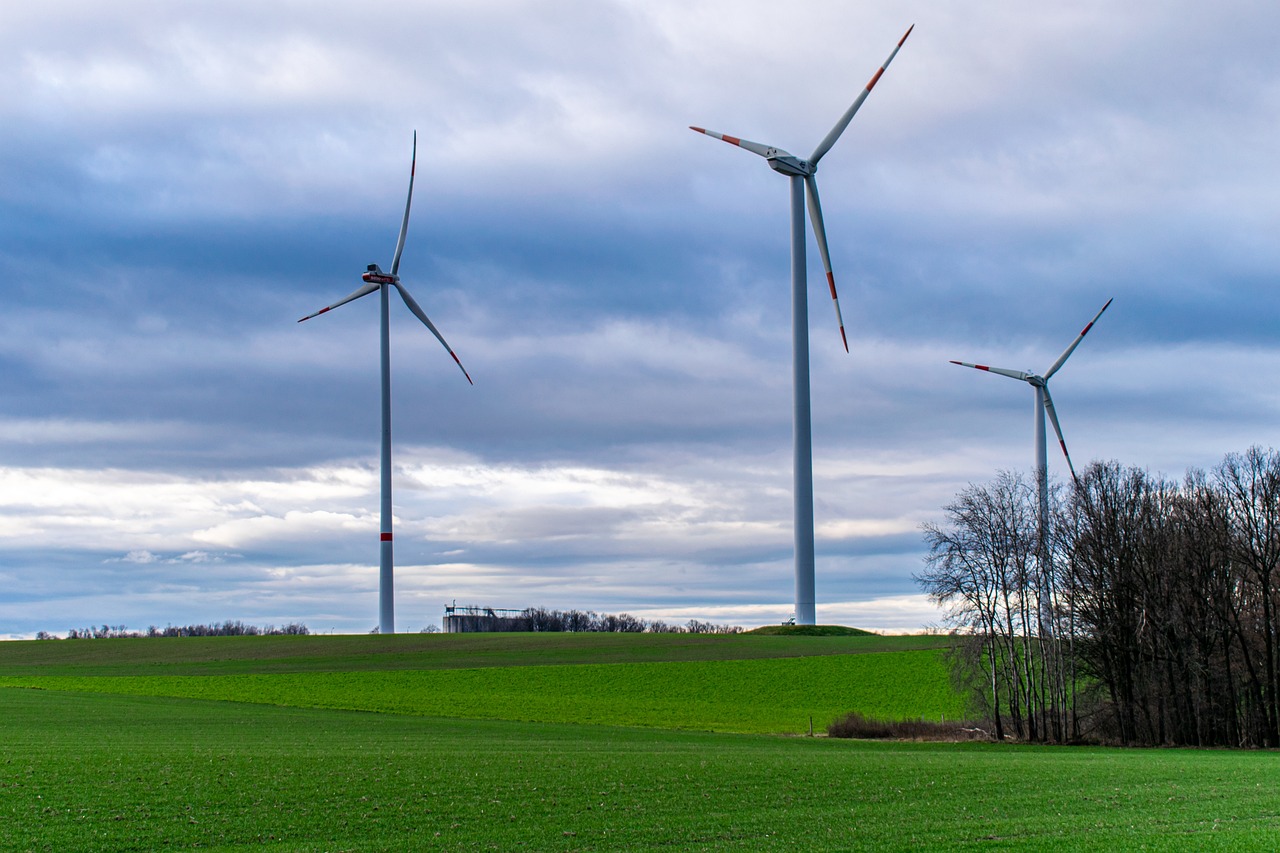
Economic Growth and Renewable Energy
Renewable energy is not just a buzzword; it's a game changer for the global economy. As countries around the world grapple with the challenges of climate change and dwindling fossil fuel reserves, the shift towards clean energy sources is proving to be a catalyst for economic growth. By investing in renewable energy, nations are not only enhancing their energy security but also creating new industries that drive economic performance. Imagine a world where the sun and wind power our homes and businesses, leading to lower energy costs and a more stable economy. Sounds appealing, right?
The correlation between renewable energy investments and overall economic performance is becoming increasingly evident. Studies have shown that for every dollar invested in renewable energy, there is a substantial return in terms of job creation, technological innovation, and increased productivity. For instance, a recent report indicated that the renewable energy sector could contribute over $2 trillion to the global economy by 2030. This surge in investment not only boosts GDP but also fosters a more resilient economic landscape.
Moreover, renewable energy projects often attract foreign direct investment (FDI), which can invigorate local economies. When a country showcases its commitment to clean energy, it sends a strong signal to investors looking for sustainable opportunities. This influx of capital can lead to infrastructure development, technological advancements, and a ripple effect that benefits various sectors. The renewable energy landscape is evolving rapidly, and countries that embrace this shift stand to gain a competitive edge in the global market.
However, it's essential to recognize that the transition to renewable energy is not without its challenges. Economic growth must be balanced with environmental considerations to ensure that we are not just creating jobs but also protecting our planet. This is where sustainable practices come into play. By integrating renewable energy solutions with sustainable practices, we can create a more holistic approach to economic development.
To illustrate the impact of renewable energy on economic growth, let's take a look at some key statistics:
| Year | Investment in Renewable Energy (in billion USD) | Jobs Created | GDP Contribution (in billion USD) |
|---|---|---|---|
| 2020 | 300 | 11 million | 1,200 |
| 2021 | 350 | 12 million | 1,400 |
| 2022 | 400 | 13 million | 1,600 |
This table highlights the impressive growth trajectory of renewable energy investments and their direct correlation with job creation and GDP contributions. As we can see, the numbers are on an upward trend, which is a promising sign for the future.
In conclusion, the impact of renewable energy on economic growth is profound and multifaceted. By embracing clean energy sources, countries can not only enhance their energy security but also create new industries and job opportunities that lead to sustainable economic development. It's a win-win situation that benefits both the economy and the environment. As we move forward, it is crucial for policymakers, businesses, and communities to work together to harness the full potential of renewable energy, ensuring a brighter and more prosperous future for all.
- What is renewable energy? Renewable energy comes from sources that are naturally replenished, such as solar, wind, hydro, and geothermal energy.
- How does renewable energy contribute to economic growth? By creating new industries, generating jobs, and attracting investments, renewable energy enhances overall economic performance.
- What are the challenges in transitioning to renewable energy? Challenges include skill gaps, regional disparities in job availability, and the need for substantial upfront investments.
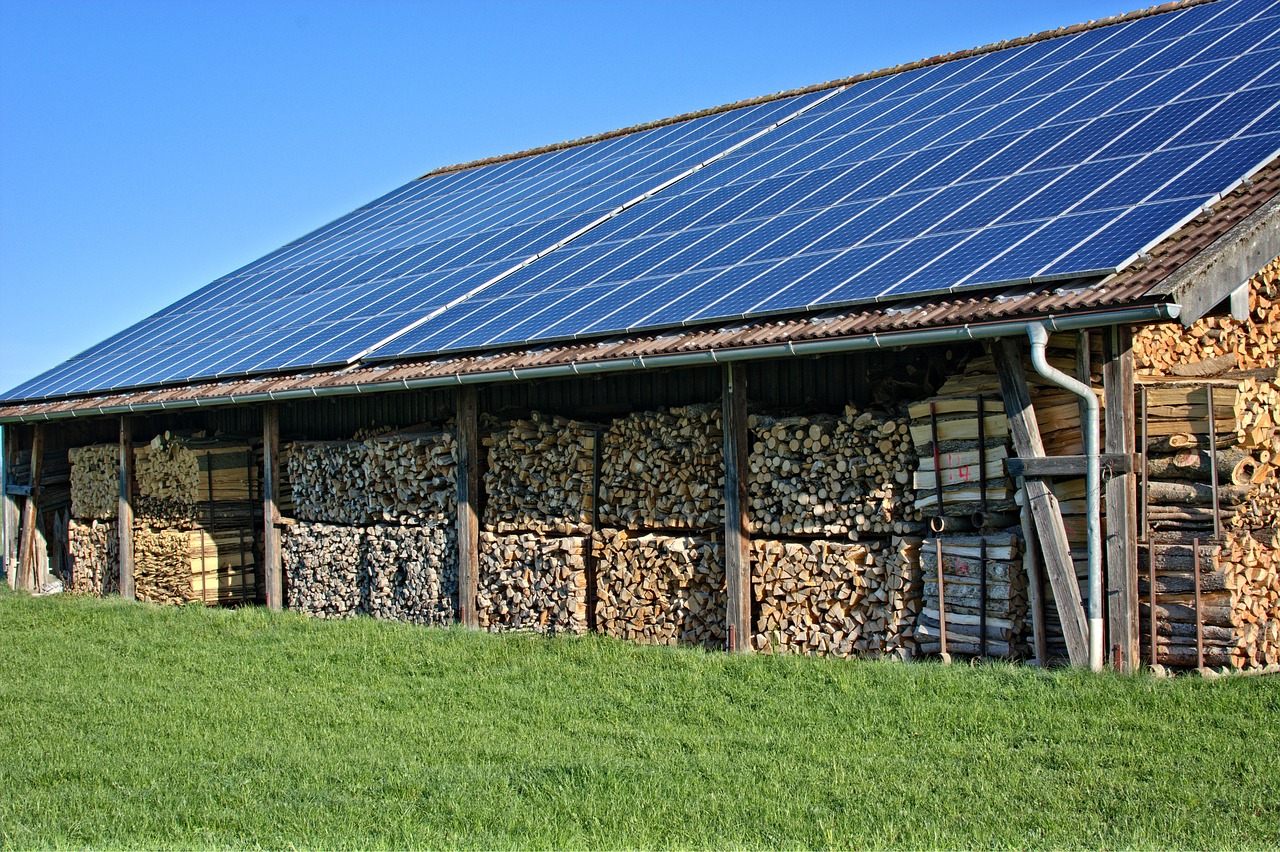
Job Creation in the Renewable Sector
The shift towards renewable energy sources has not only been a crucial step in combating climate change but has also sparked a remarkable wave of job creation across the globe. As countries invest in clean energy technologies, millions of jobs are being generated, transforming local economies and providing new opportunities for individuals. It's fascinating to see how the renewable energy sector is evolving and the significant role it plays in the job market. But what types of jobs are we talking about? And how do these jobs impact local communities? Let's dive into the details.
Renewable energy encompasses a variety of sectors such as solar, wind, hydroelectric, and geothermal energy. Each of these sectors contributes uniquely to job creation. For instance, solar energy has seen an explosion in demand, leading to the need for solar panel installers, maintenance technicians, and sales representatives. Similarly, the wind energy sector requires wind turbine technicians and project managers. The beauty of this transition is that it opens doors for individuals with diverse skill sets. From engineering to project management, the renewable sector is a treasure trove of opportunities.
In the renewable energy landscape, job roles are as diverse as the technologies themselves. Here are some key roles that are emerging:
- Solar Photovoltaic Installers: These professionals install solar panels on rooftops and other structures, ensuring they are positioned for maximum sunlight exposure.
- Wind Turbine Technicians: Responsible for the maintenance and repair of wind turbines, these technicians play a vital role in keeping wind energy systems operational.
- Energy Analysts: With a focus on data, these analysts assess energy consumption patterns and help optimize energy efficiency.
- Project Managers: Overseeing renewable energy projects from inception to completion, these managers coordinate teams and resources.
As these job roles evolve, so do the training and education requirements necessary to fill them. The renewable sector is not just about creating jobs; it's about creating skilled jobs that can drive innovation and sustainability.
With the rapid growth of the renewable energy sector, there is an increasing demand for specialized training programs. Educational institutions are stepping up to meet this demand by offering courses that focus on renewable energy technologies, sustainability practices, and energy management. For instance, vocational schools and community colleges are now providing certifications in solar installation and wind energy technology. This educational push is crucial, as it ensures that the workforce is equipped with the necessary skills to thrive in this evolving industry.
The job creation stemming from renewable energy projects can be transformative for local communities. Consider the case of a small town that welcomed a wind farm project. Not only did it create jobs for the installation and maintenance of turbines, but it also brought in additional revenue through land leases and increased local business activity. Local restaurants, hotels, and shops benefited from the influx of workers and project managers. This economic uplift has a ripple effect, enhancing the quality of life for residents and fostering a sense of community pride.
Despite the positive trends, challenges remain in job creation within the renewable sector. One significant barrier is the skill gap; not everyone has the training or education needed to step into these new roles. Additionally, there are regional disparities in job availability. While some areas may be booming with renewable projects, others may lag behind due to a lack of investment or resources. Addressing these challenges is essential for ensuring that the benefits of renewable energy job creation are felt universally.
In conclusion, the renewable energy sector is not just a beacon of hope for environmental sustainability; it is also a powerful engine for job creation. As we continue to embrace clean energy, we must also invest in education and training to prepare the workforce for the exciting opportunities that lie ahead.
Q: What types of jobs are available in the renewable energy sector?
A: The renewable energy sector offers a variety of jobs, including solar panel installers, wind turbine technicians, energy analysts, and project managers, among others.
Q: How does renewable energy job creation impact local economies?
A: Job creation in renewable energy can revitalize local economies by increasing employment opportunities, boosting local businesses, and generating additional tax revenue.
Q: What are the challenges faced in renewable energy job creation?
A: Challenges include skill gaps among the workforce and regional disparities in job availability, which can hinder the equitable distribution of job opportunities.
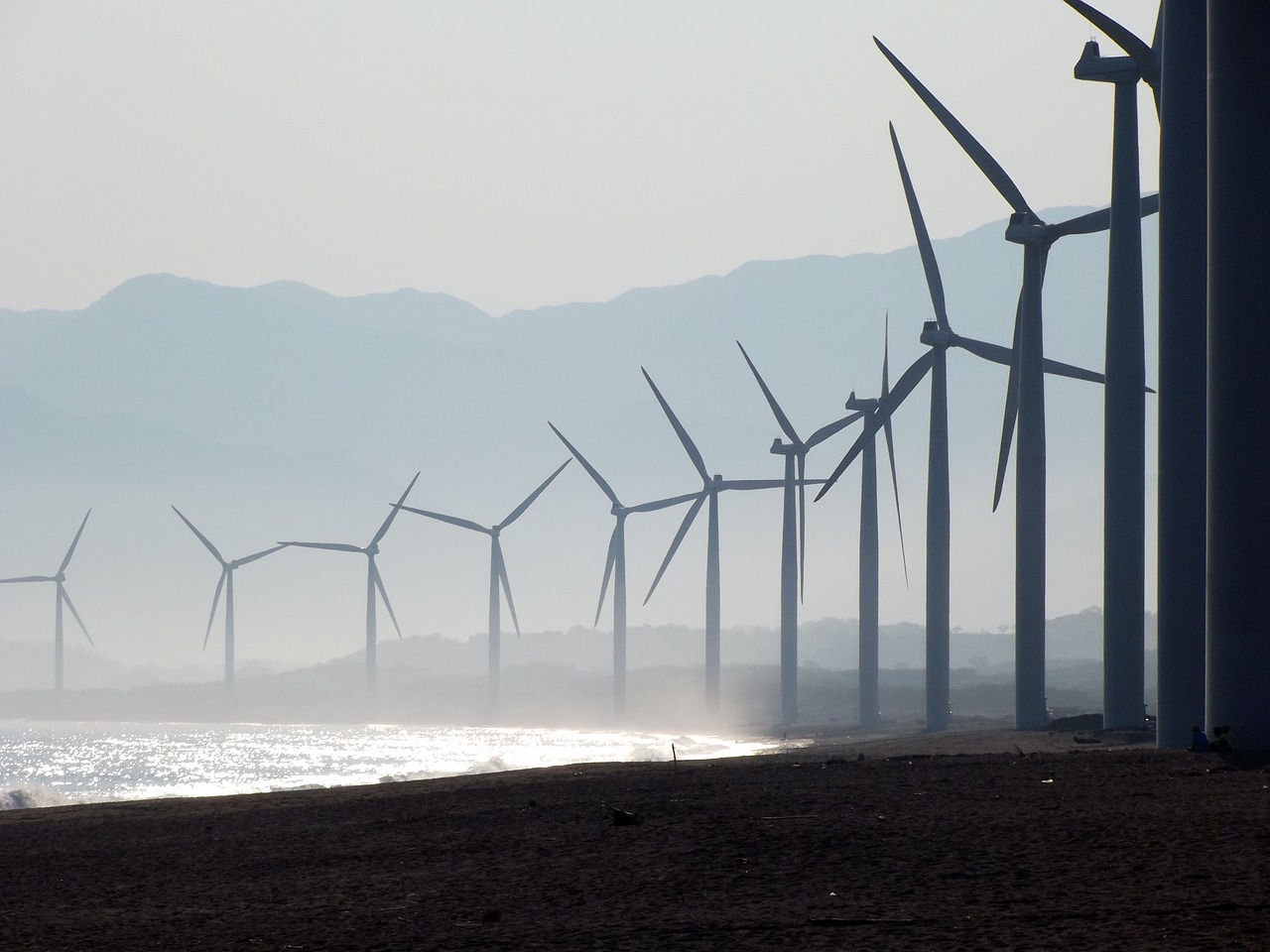
Types of Jobs Created
The transition to renewable energy is not just a trend; it's a revolution that is reshaping the job market across the globe. As countries shift their focus towards sustainable energy sources like solar, wind, and hydroelectric power, a plethora of job opportunities is emerging. These jobs span various sectors and require a diverse set of skills, making the renewable energy sector a vibrant and dynamic field for employment. For instance, the solar industry alone has created roles ranging from solar panel installers to engineers who design innovative solar technology. Similarly, the wind energy sector has opened up positions for turbine technicians and project managers overseeing large-scale wind farms.
To give you a clearer picture, let’s break down some of the key job types in the renewable energy sector:
- Installation and Maintenance: This includes roles such as solar photovoltaic (PV) installers and wind turbine service technicians. These positions are crucial as they ensure that renewable energy systems are properly installed and maintained for optimal performance.
- Engineering and Design: Engineers play a vital role in developing new technologies and improving existing ones. This category includes mechanical, electrical, and civil engineers who work on various renewable projects.
- Research and Development: Scientists and researchers are essential for innovation in renewable energy. They explore new materials, technologies, and methods to enhance energy efficiency and sustainability.
- Project Management: Project managers are responsible for overseeing renewable energy projects from inception to completion. They coordinate teams, manage budgets, and ensure that projects meet regulatory requirements.
- Policy and Advocacy: As renewable energy becomes more prominent, there’s a growing need for professionals who can navigate the regulatory landscape, advocate for supportive policies, and engage with stakeholders.
Each of these roles contributes significantly to the overall success of renewable energy initiatives. Moreover, the skill sets required for these positions can range from technical expertise in engineering and installation to soft skills such as project management and communication. This diversity not only provides opportunities for individuals with varying educational backgrounds but also fosters an inclusive workforce that can adapt to the ever-evolving energy landscape.
However, it's important to note that the rapid growth of the renewable sector also brings challenges. Many regions face skill gaps where the demand for qualified workers outpaces the supply. To address this, educational institutions and training programs are stepping up to prepare the workforce for these emerging roles. By equipping individuals with the necessary skills, we can ensure that the transition to renewable energy is not only sustainable but also economically viable.
In summary, the job creation potential within the renewable energy sector is vast and varied. As the world continues to embrace cleaner energy sources, the opportunities for employment will only expand, driving economic growth and fostering innovation. The future looks bright for those looking to enter this exciting field, and the impact on local communities can be transformative.
1. What types of jobs are available in the renewable energy sector?
There are numerous job types available, including installation and maintenance roles, engineering positions, research and development jobs, project management, and policy advocacy roles.
2. What skills are needed to work in renewable energy?
Skills can vary widely depending on the role but generally include technical expertise, project management skills, analytical thinking, and strong communication abilities.
3. How can I prepare for a career in renewable energy?
Consider pursuing relevant education or training programs in fields such as engineering, environmental science, or project management. Additionally, gaining practical experience through internships can be beneficial.
4. Are there job opportunities in all regions for renewable energy?
While job opportunities are growing, they may not be evenly distributed. Some regions may have more opportunities due to local investments in renewable projects, while others may face challenges in job availability.
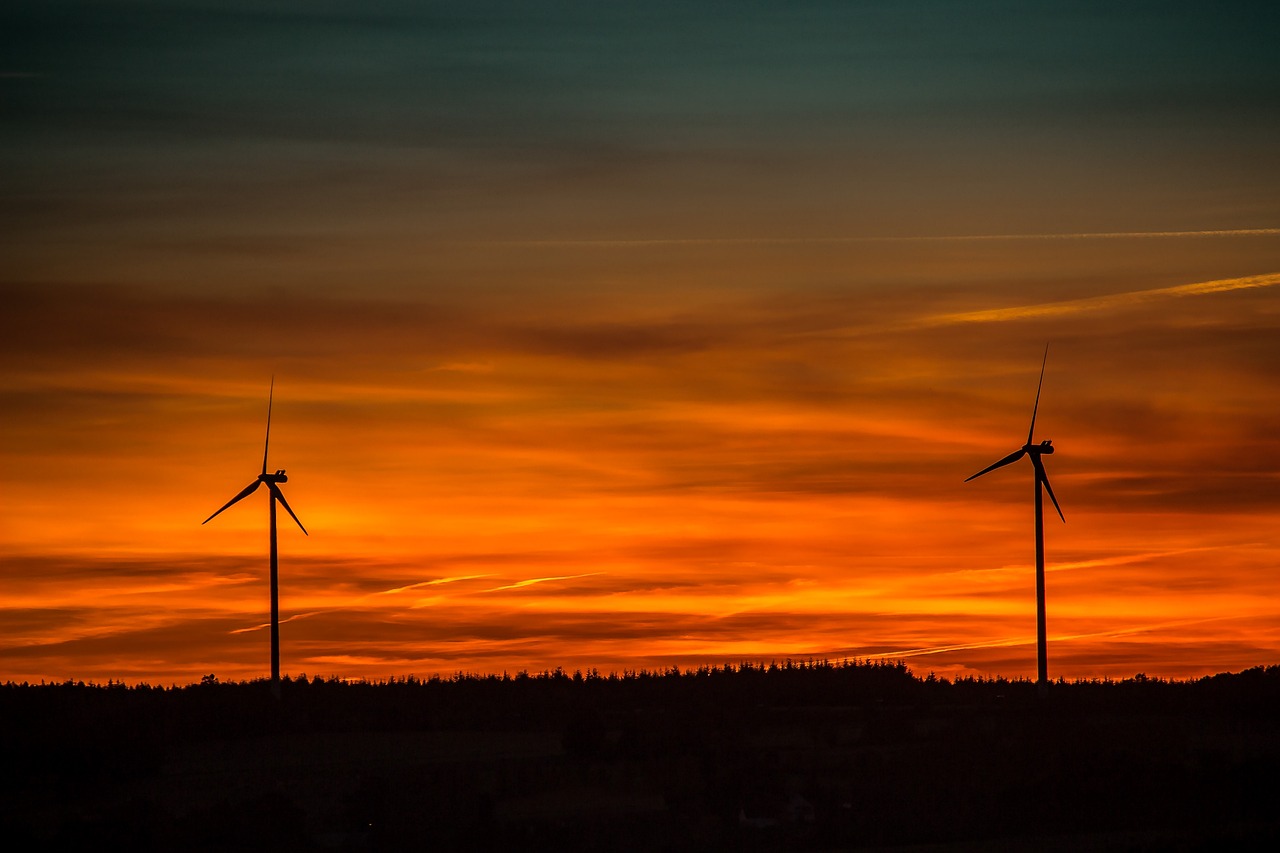
Training and Education Needs
As the renewable energy sector continues to expand at an unprecedented rate, the demand for a skilled workforce is becoming increasingly critical. This rapid growth means that educational institutions and training programs must evolve to meet the needs of this dynamic industry. The shift towards clean energy is not just a trend; it’s a revolution that requires innovative thinking and a robust educational framework.
To effectively prepare the workforce for emerging roles in renewable energy, a multifaceted approach to training and education is essential. This includes not only traditional degree programs but also vocational training, apprenticeships, and online courses that focus on specific skills related to solar, wind, and other renewable technologies. For instance, a recent study showed that regions with strong educational programs in renewable energy saw a 25% increase in job placements compared to those without.
Moreover, the curriculum needs to be adaptable and aligned with industry standards. Educational institutions should collaborate with industry leaders to ensure that the skills taught are relevant and applicable. This partnership can lead to the development of specialized programs that cover a range of topics, including:
- Solar panel installation and maintenance
- Wind turbine technology
- Energy efficiency and management
- Environmental regulations and compliance
In order to effectively address the skills gap, it’s also crucial to promote diversity and inclusion in training programs. Encouraging participation from underrepresented groups can provide a broader range of perspectives and solutions, ultimately enriching the industry as a whole. Additionally, community colleges and technical schools play a vital role in making renewable energy training accessible to a wider audience, including those who may not have pursued higher education.
As we look to the future, the integration of technology in education will also be a game-changer. Virtual reality (VR) and augmented reality (AR) tools can offer immersive training experiences, allowing students to engage with real-world scenarios in a safe environment. This innovative approach not only enhances learning but also prepares students for the practical challenges they will face in the field.
In summary, addressing the training and education needs of the renewable energy sector is essential for fostering a skilled workforce that can support the industry's growth. By investing in educational initiatives, promoting diversity, and leveraging technology, we can ensure that the next generation is well-equipped to tackle the challenges and opportunities that lie ahead in the renewable energy landscape.
- What types of training programs are available for renewable energy careers? There are various programs including vocational training, degree courses, online certifications, and apprenticeships that focus on specific skills in solar, wind, and other renewable technologies.
- How can educational institutions partner with the renewable energy industry? Institutions can collaborate with industry leaders to develop relevant curricula, provide internships, and create specialized training programs that meet the industry's needs.
- Why is diversity important in the renewable energy workforce? Diversity brings a variety of perspectives and solutions, which can enhance innovation and effectiveness within the industry, leading to better outcomes for renewable energy projects.
- What role does technology play in renewable energy education? Technology, such as VR and AR, can provide immersive training experiences that prepare students for real-world challenges in a safe and engaging way.
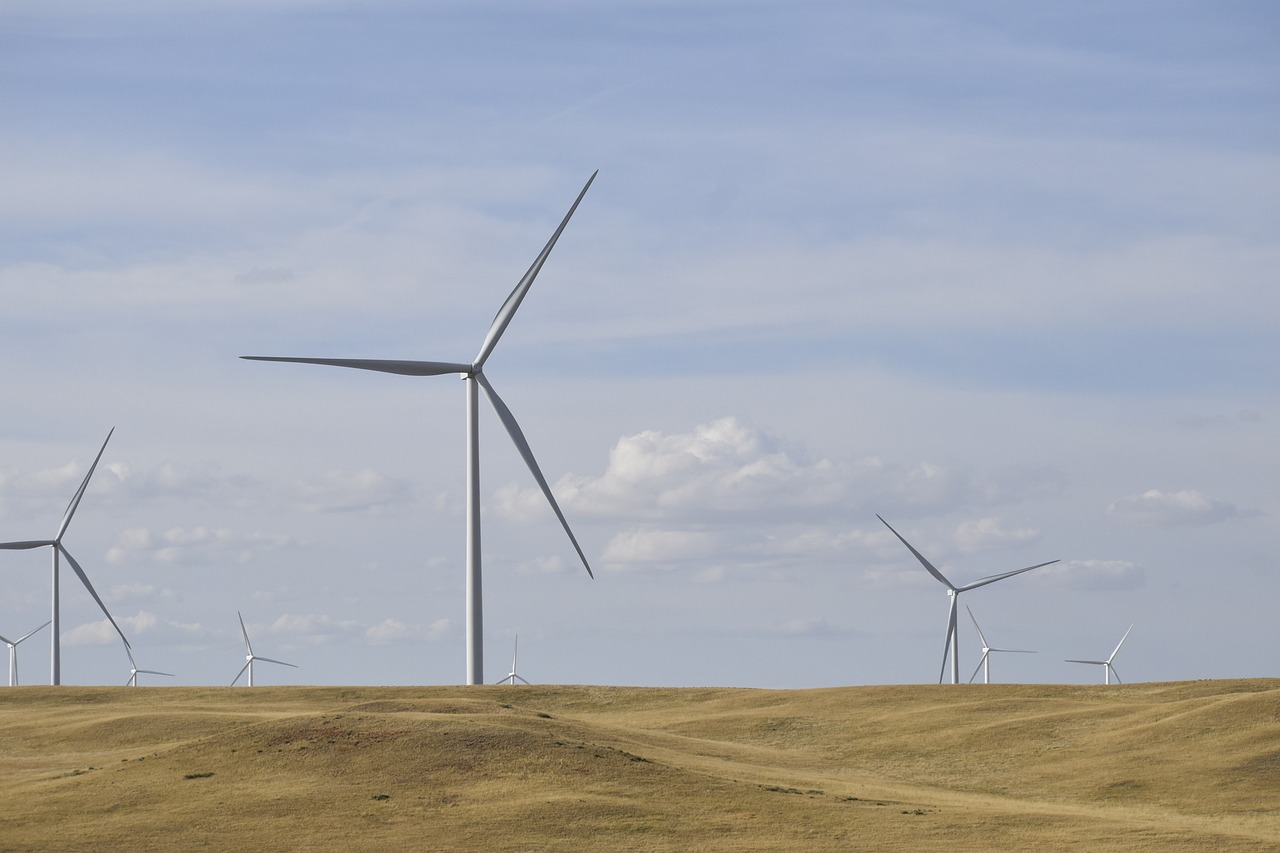
Impact on Local Communities
The transition to renewable energy sources has not only been a game-changer for the environment but has also had a profound . When new renewable energy projects, such as solar farms or wind turbines, are established, they often breathe new life into areas that may have been struggling economically. For instance, many rural communities have seen a resurgence in economic activity thanks to the influx of jobs and investments associated with these projects.
One of the most significant benefits is the creation of job opportunities. These jobs are not just limited to the construction phase of renewable energy projects; they also include long-term positions in operations, maintenance, and management. This influx of employment can dramatically lower local unemployment rates and provide residents with stable incomes. For example, a small town that once relied on a declining industry can transform into a hub for renewable energy, providing jobs in various sectors, from engineering to logistics.
Additionally, renewable energy projects often lead to increased local tax revenues. These funds can be reinvested into the community, supporting essential services such as education, healthcare, and infrastructure. This financial boost is crucial for communities that may have limited resources. As local governments receive more tax revenue, they can improve public services and quality of life for residents.
Moreover, renewable energy projects can foster a sense of community pride and ownership. When local residents are involved in these initiatives, whether through job creation or investment opportunities, they are more likely to feel connected to the project and its outcomes. This sense of ownership can lead to greater community engagement and collaboration, as residents work together towards common goals. For instance, community solar programs allow residents to invest in solar energy collectively, sharing both the costs and the benefits.
However, it is essential to recognize that the impact of renewable energy projects is not universally positive. Some communities may face challenges, such as environmental concerns or changes in land use. For example, the installation of wind farms may lead to debates about land use and its effects on local wildlife. Therefore, it is crucial for project developers to engage with the community throughout the planning process, addressing concerns and ensuring that the benefits are widely shared.
In summary, while the shift to renewable energy presents numerous opportunities for local communities, it is vital to approach these projects with a comprehensive understanding of their potential impacts. By fostering open communication and collaboration between developers and residents, communities can maximize the benefits of renewable energy while minimizing any adverse effects.
- What types of jobs are created by renewable energy projects?
Renewable energy projects create jobs in various fields, including construction, maintenance, engineering, and project management. - How do renewable energy projects affect local taxes?
These projects can increase local tax revenues, which can be reinvested into community services such as education and infrastructure. - Can renewable energy projects have negative impacts on communities?
Yes, some projects may lead to environmental concerns or changes in land use, highlighting the importance of community engagement. - How can communities get involved in renewable energy projects?
Communities can participate through public meetings, investment in community solar programs, and collaboration with developers.

Challenges in Job Creation
While the renewable energy sector is booming and creating millions of jobs worldwide, it is not without its challenges. One of the most significant hurdles is the skill gap. As the industry evolves, the demand for specialized skills is increasing, yet many potential workers lack the necessary training and education to fill these roles. This disconnect can lead to unfilled positions and hinder the growth of the sector. For instance, while there are plenty of opportunities in solar energy installation, many individuals may not have access to the training programs that equip them with the skills required for these jobs.
Another challenge is the regional disparity in job availability. Urban areas often see a higher concentration of renewable energy projects, while rural areas may be left behind. This can create a situation where individuals in less developed regions struggle to find jobs in the burgeoning renewable sector, leading to economic imbalances. Furthermore, the transition from fossil fuels to renewable sources can result in job losses in traditional energy sectors, creating tension and uncertainty in communities that have relied on these industries for generations.
Additionally, investment volatility can pose a risk to job creation. Fluctuations in government policies, market prices, and public interest can affect funding for renewable projects. When investments dry up, so do the jobs associated with those projects. For example, if a country suddenly cuts subsidies for wind energy, it could stall projects and lead to layoffs, leaving workers in a precarious situation.
Despite these challenges, the renewable energy sector continues to grow, and solutions are being explored to mitigate these issues. Training and education initiatives are being developed to better equip the workforce, while policies are being crafted to ensure a more equitable distribution of jobs across regions. The journey towards a sustainable energy future is complex, but with the right strategies in place, we can overcome these challenges and unlock the full potential of renewable energy job creation.
- What are the main challenges in job creation within the renewable energy sector?
The primary challenges include skill gaps, regional disparities in job availability, and investment volatility.
- How can the skill gap be addressed?
By developing specialized training programs and educational initiatives, we can better prepare the workforce for emerging roles in renewable energy.
- What role do government policies play in job creation?
Government policies, including subsidies and incentives, are crucial in fostering investment and creating jobs in the renewable energy sector.

Investment Trends in Renewable Energy
Over the past decade, the landscape of renewable energy investment has undergone a remarkable transformation, emerging as a pivotal element in the global economy. As nations grapple with the pressing challenges of climate change and the need for sustainable energy solutions, investments in renewable sources such as wind, solar, and hydroelectric power have surged dramatically. This trend is not merely a fleeting moment; it's a robust movement reshaping industries and driving economic growth. But what exactly is fueling this investment boom, and how are different regions responding?
At the core of this investment surge is the growing recognition of the economic benefits associated with renewable energy. Countries around the world are prioritizing clean energy to reduce dependency on fossil fuels, enhance energy security, and create jobs. According to recent studies, global investments in renewable energy reached an astonishing $500 billion in 2022 alone, reflecting a steady increase from previous years. This upward trend signifies not just a response to environmental imperatives but also an acknowledgment of the lucrative opportunities that lie within the clean energy sector.
When we look at global investment patterns, it becomes evident that certain regions are leading the charge. For instance, countries like China, the United States, and Germany are at the forefront of renewable energy investments. China, in particular, has emerged as a powerhouse, accounting for nearly 45% of all global investments in renewables. This dominance is largely attributed to their aggressive expansion of solar and wind energy projects, supported by government policies that favor renewable energy development.
In contrast, regions such as Africa and parts of South America are still in the early stages of renewable energy investment. However, they are beginning to attract attention due to their vast untapped resources and potential for growth. For instance, countries like Kenya and Brazil are making significant strides in harnessing their natural resources, which could lead to a substantial increase in investments in the coming years.
Another critical aspect of the investment landscape is the balance between private and public investment. Government incentives, such as tax breaks and subsidies, play a crucial role in attracting private sector investment. For example, in the United States, the federal government has implemented various tax credits for solar and wind energy projects, which have significantly boosted investment levels. Additionally, private companies are increasingly recognizing the long-term benefits of investing in renewable energy, leading to a wave of corporate sustainability initiatives.
However, challenges remain. While investment trends are promising, the transition to a renewable energy economy is not without its hurdles. Issues such as regulatory uncertainties, the need for technological advancements, and the integration of renewable energy into existing grids can impede progress. Addressing these challenges will be essential for maintaining the momentum of investment in the renewable sector.
In conclusion, the trends in renewable energy investment are indicative of a broader shift towards sustainability and economic resilience. As governments, businesses, and communities recognize the multifaceted benefits of clean energy, the potential for growth and innovation in this sector is immense. The future of renewable energy investment looks bright, and it is poised to play a crucial role in shaping a sustainable global economy.
- What are the main drivers of investment in renewable energy? The primary drivers include government incentives, technological advancements, and the increasing demand for sustainable energy solutions.
- Which countries are leading in renewable energy investments? China, the United States, and Germany are currently the leaders in renewable energy investments.
- How can private investment be encouraged in renewable energy? By providing tax incentives, subsidies, and creating a stable regulatory environment, governments can encourage more private sector investment.
- What challenges does the renewable energy sector face? Challenges include regulatory uncertainties, the need for technological improvements, and the integration of renewables into existing energy grids.
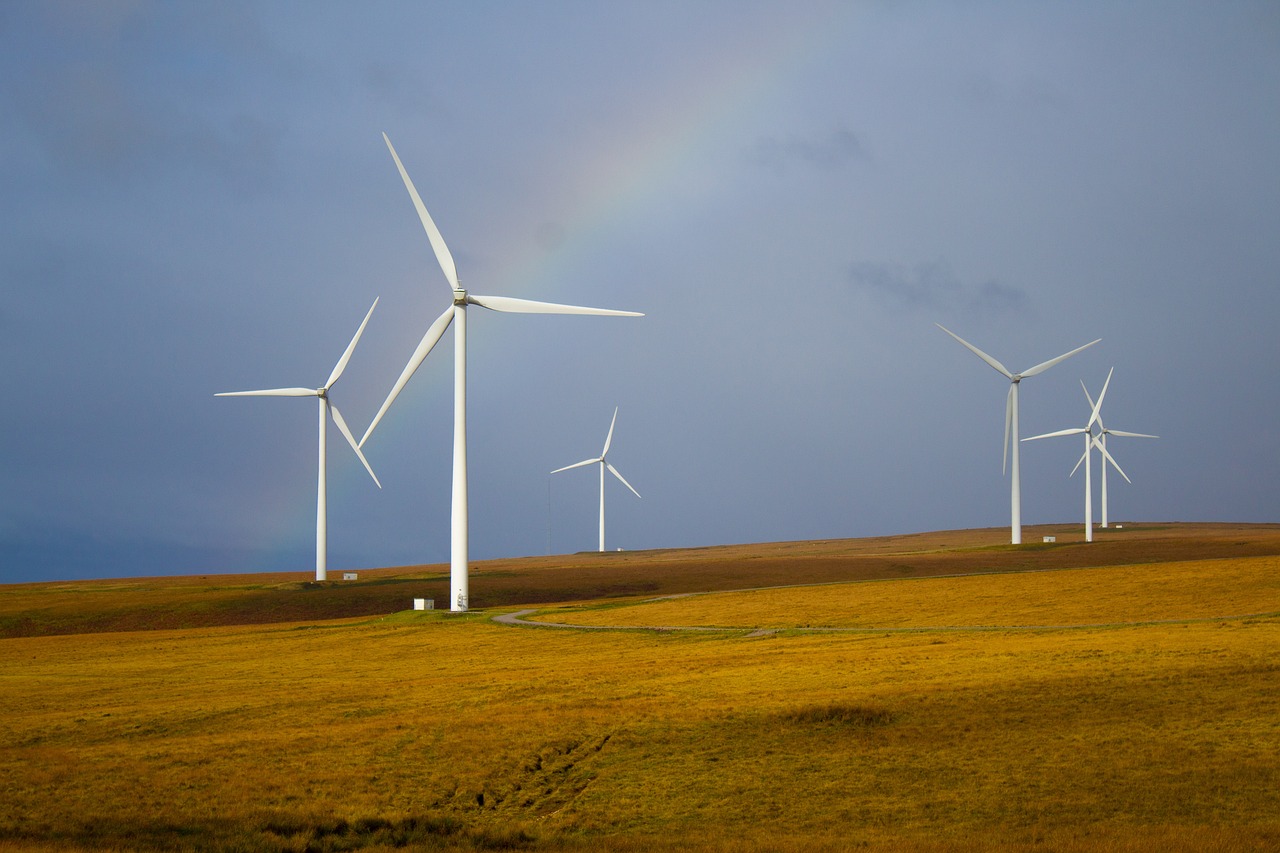
Global Investment Patterns
The landscape of global investment in renewable energy has undergone a remarkable transformation over the past decade. As nations grapple with the urgent need to combat climate change, there has been a significant uptick in financial commitments towards clean energy initiatives. This shift is not just a fleeting trend; it's a profound change that is reshaping the economic fabric of countries around the world. The investment patterns vary widely across regions, reflecting local policies, market conditions, and the availability of natural resources. For instance, countries like China and the United States have emerged as frontrunners in renewable energy investments, leading the charge in solar and wind technologies.
In North America, the renewable energy sector has seen substantial investments, particularly in solar and wind energy. According to recent reports, the U.S. alone invested over $50 billion in renewable energy projects in 2022, highlighting a commitment to sustainable energy solutions. Meanwhile, in Europe, countries such as Germany and Denmark are leading the way with ambitious renewable energy goals and substantial public and private investments. The European Union has set a target to achieve at least 40% of its energy from renewable sources by 2030, which has spurred a wave of investment in wind and solar power.
On the other hand, Asia is witnessing a surge in investments driven by rapidly growing economies and a pressing need for energy security. Countries like India and Japan are making significant strides towards renewable energy adoption. India, for example, aims to reach 450 GW of renewable energy capacity by 2030, which involves massive investments in solar and wind energy projects. The government is actively promoting policies that encourage both domestic and foreign investments, making it an attractive destination for renewable energy investors.
To illustrate the differences in investment patterns globally, the following table summarizes the top five countries leading in renewable energy investments as of 2023:
| Rank | Country | Investment (in billion USD) | Primary Renewable Source |
|---|---|---|---|
| 1 | China | 130 | Solar, Wind |
| 2 | United States | 50 | Wind, Solar |
| 3 | Germany | 40 | Solar, Wind |
| 4 | India | 30 | Solar |
| 5 | Japan | 25 | Solar, Wind |
As we delve deeper into the dynamics of investment in renewable energy, it becomes clear that the balance between private and public investment is crucial. Governments play a pivotal role in creating favorable conditions for investments through incentives, subsidies, and regulatory frameworks. For instance, tax credits and grants can significantly lower the financial barriers for private companies looking to invest in renewable energy projects. In many cases, public investments serve as a catalyst that encourages private sector participation, leading to a symbiotic relationship that fuels growth in the renewable energy sector.
In conclusion, understanding the in renewable energy is essential for stakeholders looking to navigate this evolving landscape. With a clear trend towards increasing investments, the future looks promising for renewable energy as it becomes a cornerstone of sustainable economic growth. As we continue to witness these developments, one can only wonder: how will these investments shape our planet's future?
- What are the main types of renewable energy? Renewable energy comes from sources like solar, wind, hydroelectric, geothermal, and biomass.
- Why is investment in renewable energy important? Investments in renewable energy are crucial for reducing carbon emissions, enhancing energy security, and promoting sustainable economic growth.
- How can individuals invest in renewable energy? Individuals can invest in renewable energy through green bonds, stocks of renewable energy companies, or by installing solar panels on their properties.
- What challenges do renewable energy investments face? Challenges include regulatory hurdles, market volatility, and the need for technological advancements.
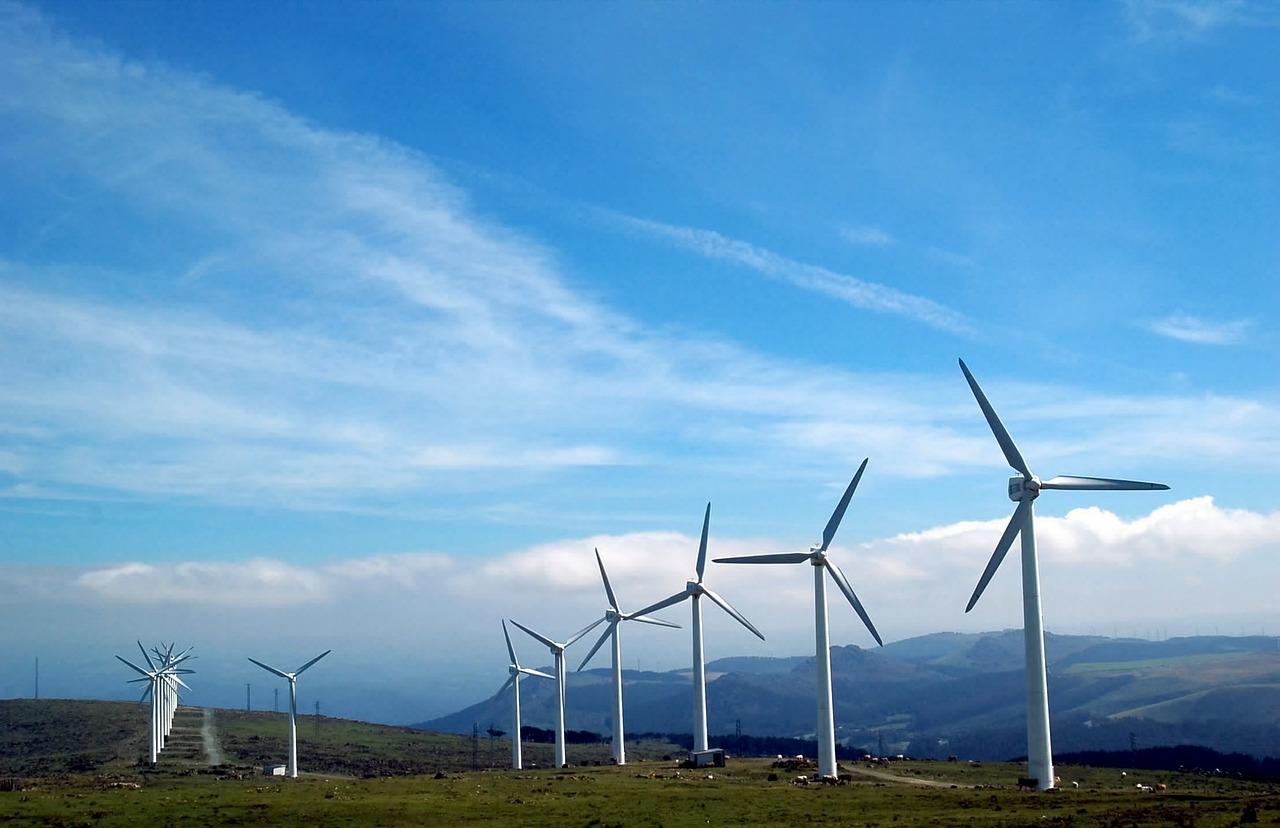
Private vs. Public Investment
When it comes to the growth of renewable energy, understanding the dynamics of private and public investment is crucial. Both sectors play significant roles, yet they operate differently and have unique impacts on the renewable energy landscape. On one hand, public investment typically comes from government funding, grants, and subsidies aimed at promoting clean energy initiatives. This financial support helps to kickstart projects that might otherwise struggle to find funding due to perceived risks or long payback periods. On the other hand, private investment, which includes funding from individuals, corporations, and venture capitalists, tends to be more agile and responsive to market demands. It often drives innovation and efficiency in the sector.
Public investment can be seen as a stabilizing force in the renewable energy market. Governments worldwide are increasingly recognizing the importance of transitioning to sustainable energy sources, leading to a surge in funding for projects like wind farms, solar power plants, and research into new technologies. For instance, countries like Germany and China have made significant public investments that have not only advanced their own energy infrastructures but have also positioned them as leaders in the global renewable energy market.
Conversely, private investment is essential for scaling these initiatives. Investors are drawn to renewable energy due to its potential for high returns, particularly as technology advances and costs decline. A recent report indicated that private investment in renewable energy projects reached a staggering $300 billion globally in just one year, showcasing the immense interest and potential in this sector. However, the challenge lies in creating an environment where both public and private sectors can collaborate effectively.
To illustrate the contrasting impacts of these investments, consider the following table:
| Aspect | Public Investment | Private Investment |
|---|---|---|
| Source of Funding | Government grants, subsidies | Private individuals, corporations, venture capital |
| Risk Tolerance | Lower risk tolerance, focused on long-term benefits | Higher risk tolerance, driven by potential returns |
| Speed of Implementation | Slower, due to bureaucratic processes | Faster, more responsive to market needs |
| Innovation | Encourages foundational research | Drives technological advancements and efficiency |
Ultimately, the relationship between public and private investment in renewable energy is like a dance—each partner must move in harmony to create a sustainable future. Governments can set the stage with supportive policies and financial backing, while private investors can bring energy and innovation to the forefront. By fostering collaboration, we can maximize the impact of both sectors, ensuring a robust transition to renewable energy.
- What is the role of public investment in renewable energy? Public investment helps to mitigate risks associated with new projects and provides essential funding to kickstart initiatives.
- How does private investment influence renewable energy? Private investment drives innovation and efficiency, responding quickly to market demands and technological advancements.
- Can public and private sectors work together? Yes, collaboration between public and private sectors can enhance the effectiveness of renewable energy initiatives and lead to sustainable growth.
Frequently Asked Questions
- What is the impact of renewable energy on economic growth?
Renewable energy significantly boosts economic growth by creating new industries and enhancing energy security. Investments in renewable sources lead to improved overall economic performance, driving innovation and increasing productivity.
- How many jobs are created in the renewable energy sector?
The shift towards renewable energy has generated millions of jobs globally. These jobs span various sectors, including solar, wind, and bioenergy, providing diverse opportunities for skilled workers and contributing to local economies.
- What types of jobs are available in renewable energy?
Jobs in renewable energy range from engineering and project management to installation and maintenance roles. There are opportunities for both technical and non-technical positions, catering to a wide array of skill sets.
- Are there training programs available for jobs in renewable energy?
Yes, as the renewable sector expands, numerous specialized training programs have been developed. These initiatives aim to equip the workforce with the necessary skills and knowledge to thrive in emerging roles within the industry.
- How does renewable energy job creation impact local communities?
Job creation in renewable energy can revitalize local economies by providing stable employment opportunities and increasing local spending. Communities that have embraced renewable projects often experience significant economic uplift and improved quality of life.
- What challenges does the renewable energy sector face in job creation?
Despite the positive trends, the renewable energy sector faces challenges, such as skill gaps and regional disparities in job availability. Addressing these barriers is crucial to ensure equitable job opportunities across different areas.
- What are the current investment trends in renewable energy?
Investment in renewable energy has surged over the past decade, with various regions showing different levels of financial commitment. Key players include governments, private investors, and corporations, all contributing to the growth of clean energy initiatives.
- How do private and public investments differ in renewable energy?
The balance between private and public investment is essential for the growth of renewable energy. Government incentives often complement private sector initiatives, creating a robust environment for clean energy projects to thrive.



















